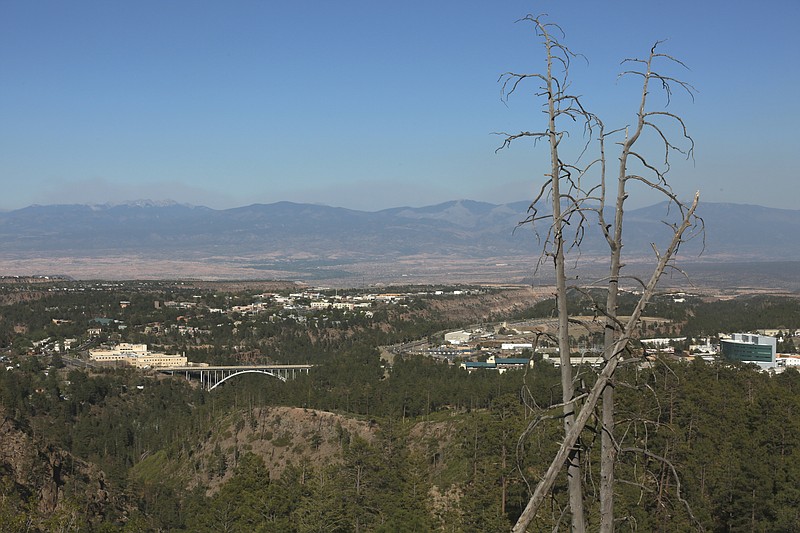SANTA FE, N.M. -- Crews fighting the second-largest wildfire in New Mexico's history are trying to take advantage of several days of mild winds to gain control over a fire that had charred more than 450 square miles by Sunday.
Fire officials said the wildfire grew by about 14 square miles since Saturday night but now was at 36% containment, up from 27% previously.
It was originally forecast that winds would pick up today, but fire officials said that likely won't happen until later in the week.
"We get a small reprieve," fire information officer Renette Saba said Sunday. "The winds are not strong enough to keep from getting air resources in there. The crews feel they can make good progress on contingency lines."
Saba said the fire was actively burning on one side only, with the north part going over an old scar area and producing a large smoke plume.
Nearly 2,000 firefighters were battling the 5-week-old fire that threatened the small New Mexico city of Las Vegas for a time before being stopped just outside town last week. The blaze has already destroyed at least 473 structures including homes and other buildings.
New Mexico Gov. Michelle Lujan Grisham said Friday in a letter to President Joe Biden that New Mexico needs more help than is being provided under the president's recent disaster declaration.
The governor said the needed response, including immediate funding for debris removal and "a full range of emergency protective measures," exceeds the state's capabilities and the federal government should bear 100% of the costs because one part of the fire was ignited by wind-blown embers from a prescribed burn in the Santa Fe National Forest.
Wildfires have broken out this spring across multiple states in the western U.S., including California, Colorado and Arizona.
Predictions for the rest of the spring do not bode well for the West, with drought and warmer weather brought on by climate change worsening wildfire danger.
Nationwide, more than 2,000 square miles have burned so far this year -- the most at this point since 2018, according to the National Interagency Fire Center.
In Colorado, a fire burning in ponderosa pine and grass southwest of Colorado Springs had grown to 1.8 square miles by Sunday and remained 10% contained, fire officials said.
The High Park Fire broke out Thursday about 4 miles west of the former mining town of Cripple Creek. The cause of the fire remains unknown.
On Sunday morning, the evacuation area included 134 homes while another 463 residences were under pre-evacuation notices, said fire information officer Maribeth Pecotte.
Crews were doing mop-up work on the northwest and west-southwest edges of the fire on Sunday. At least four helicopters were aiding fire crews on the southeastern edge of the fire, which was burning in steep, rocky terrain with heavy fuels, Pecotte said.
